Having already locomoted by plane, bus, subway, taxi, ferries, zodiacs, kayak, and foot, we then added a rental car to the mix. Isla Chiloe, southwest of our cargo ferry destination port of Puerto Montt, was the next stage of our journey and we wanted to go places too remote and inconvenient for regular bus service.
Isla Chiloe was a somewhat idyllic rural farming and fishing island on the Pacific coast of Chile, and was the second largest island in all of South America. Reached by a frequent ferry service from the mainland town of Pargua, we first entered the fishing village of Ancud. Here we feasted on one of the island’s signature dishes, curanto, which came out on two plates (for one person) piled high with mussels, clams, fava beans, three types of potatoes (from the 200 different kinds grown on Chiloe), pork, sausage, chicken, and a broth for pouring over everything. Scrumptious, as we sat overlooking men working on multi-colored fishing boats while seaside drunks drank and pissed below our window.
I had to adapt to the signage and driving customs of Chile, though it was not particularly difficult. I did find my attention level had to be much higher than in the US. Pedestrians everywhere, mostly jaywalking. Nice – though feral – dogs darting in and out. And constantly watching for the occasional horseback rider, flock of sheep, or suspension busting pothole on the back roads. Signs became clear, though there were many one way streets and sometimes the signage was only implied (such as parked cars all in the same direction). When in “downtown” Ancud, I thought I was being written up for a parking ticket. However, it turned out their public street parking meters were live people, employed to stand around and watch a block, time you, and then walk up to collect a fee. I was suspicious at first, but confirmed its legitimacy later.
After leaving Ancud with a full tummy and eager to explore, we headed into the rolling farm lands overlooking coastal bays. Roads were lined with electric yellow flowered bushes forming hedgerow walls for miles and miles, interspersed with second growth trees and nalca plants with leaves so large that the locals use them as umbrellas.
Turning off the main central road and onto the simple network of rough rutted dirt roads edging the eastern coast, we began exploring what Chiloe had to offer. Since the island was not much visited by tourists yet, it retained both original flavor and rough small town originality.
Quemchi, one of our favorite towns on Isla Chiloe, greeted us with a grand view of beached bright yellow boats lining the town bulkheads and waiting for the tide to return. Neighbors were walking all over, families were on the beach, shacks were crammed along the water, and men worked on their temporarily land-stabilized boats. That night we returned to Quemchi for a shared bath waterside small room. We ate dinner with a nice Dutch couple on a deck overlooking the boats and bay, ordering with no menu to a Spanish-only waiter. Lots of pantomime and Spanglish later, the end results tasted good.
The town of Quicavi was at the quiet end of a remote dirt road. There was no commerce except fishing, and few cars. Every property was waterfront, and front yards fenced in cows, horses, hens, and squealing pigs. Kids and parents congregated at the overgrown park in front of the barn-like church, bouncing soccer balls off heads, chatting, and swinging on a playset in the setting sunlight.
A bit further south on the coast, the sleepy cabin town of Tenaun settled at the base of its hillside, where the only activity was repair on the church steeple and a man tending to a family member’s gravesite. The town of San Juan was entered by a steep tire spinning hill overlooking the hamlet that encompassed this wooden boat building center for Isla Chiloe. It was situated on a protected inlet, where black-necked swans floated elegantly just offshore. The omnipresent “supermercado” was there, as in many small towns and seemingly on every block of the big towns; they tended to be small hole in the wall stores emphasizing bottled drinks, popsicles, dried goods, and rudimentary foods. Some were only about ten feet square, including the cashier. Other than that, it was all waterfront cabins, no two alike, and the usual Catholic church, this one also rather barn-like. The only sounds were those of an occasional hammer or chisel on the hull of a boat.
Isla Chiloe’s homes had several unusual characteristics that differentiated them from anywhere else in Chile, and even the world. A mutated style arose over the centuries from both indigenous preferences and the European roots of most new settlers. One defining characteristic became the use of angled windows. Instead of the usual, and easier, right angle windows created in most places, Chiloe windows frequently went off at non-perpendicular angles. This may have followed a roofline, defined an aesthetic element of a door, or created many mini windows inside an overall larger window. Also, the homes had the widest range of siding shingles likely anywhere. The shingles were lined up and overlapped in the normal way, but ended in repeated designs of curves, holes, square cuts, waves, and other shapes. In communities filled with dilapidated homes of somewhat low construction quality, individualism was expressed through their windows and shingles.
Examples of Isla Chiloe’s house shingle designs
Boarding yet another ferry that left from the main island at Dalcahue, we ventured over to the smaller island of Isla Quinchao to see the few relatively untouched towns there. Approaching the little island’s interesting village of Achao, we overlooked the coastline to see children harvesting shellfish in the water by the town below. Walking around, we viewed a wide variety of their shingle designs and visited a 1730 church with interesting interior design features, exposed rock foundation, and hand hewn floor boards that wobbled because they were not secured to anything. The beach was a great place to eat pastries from a local pastelria while watching fishermen load and unload. Much of the town’s activity revolved around a huge slightly sloped boat ramp that served as a fixed pier that gradually went down to meet the water at any tidal height. People and trucks pulled up beside brightly bobbing boats throughout the day there to serve as the town’s economic engine.
Passing back to the mainland and briefly poking into the dusty little town of Llaulao, we moved on to Isla Chiloe’s main town, Castro. There we overnighted at a ramshackle hospedaje on stilts above the upper tides, in a type of residence called a palafito. It was a neat location for only $20 a night, right over the water and close to downtown. The shower required us to balance having the shower and sink faucets continually on to get the instant-on hot water heater to work, but we cracked the code. That morning we woke to meowing cats and clucking chickens, with the sun rising over a tranquil cove.
Palafitos were the essence of rustic: slapped together cabins on old pilings, leaning here and there, all touching their neighbor’s walls. They were recognized by UNESCO as deserving special historical status because of their mixture of housing need combined with shabby beauty. Most of the palafitos were destroyed in 1960 from a major earthquake and resulting tidal wave. More recently, the remaining and replaced ones have posed an interesting dilemma for the city: they were famous and have become synonymous with Castro and Chiloe, yet they were antiquated in terms of construction standards and sanitation. It was the most garbage strewn beach we had ever walked, punctuated every once in a while by the flush of a toilet directly onto the beach below a palafito’s rotting pilings.
Due to its relatively large size, Castro was very urban and concrete in contrast to the rest of Chiloe. However, it did have many interesting nooks beyond the palafitos. The market was entertaining. We bought slippers of lamb’s wool directly connected to the leather hide, and also had fun tasting many great tasting fruity sweet liquors. We walked away with three bottles, and my favorite was chocolate. In addition, Iglesia San Francisco was the most beautiful church I have yet encountered. Not as grand or ornate as some, which was part of its beauty, but its commitment to an all natural unpainted solid wood interior was very striking and unexpected.
Continuing on south into the island, we stopped at Chonchi to see the structural restoration of Iglesia San Carlos de Borromeo, the local church. And then we swung west toward the Pacific coast, passing by deep blue lakes and forested hillsides dotted with small farms and lakefront cabins.
Cucao was the gateway to the southern sector of Chiloe Parque Nacional, where we met up with some folks from the 4 day Navimag ferry. The park offered a walk through forest, cattle pasture dunes, and then to flat beach that stretched for many miles in either direction. Out by the crashing waves it was only us and a fisherman on his horse, checking his surf nets.
For our final evening on Isla Chiloe, we returned to Ancud and found the very good Hospedaje San Carlos, run by a nice and energetic maternal hostess. We got the recommendation from another hospedaje that was from the same extended family. Although we could hear everything through the walls and breakfast was again only stale toast (like most places), it was a great value and the truly friendly elderly hostess kissed us on the cheeks as we departed.
From Isla Chiloe, it was ferry to the mainland, car to Puerto Montt, bus to airport, airplane to Santiago, bus to Valparaiso, and hotel transfer (in the owner’s personal car) to Hostal Rincon de Valparaiso for a couple night’s stay. This hostal had a good central location, very friendly service, free Internet access, and the best quality rooms of the trip (shared bathrooms); recommended.
Valparaiso was the last leg of this Chilean journey, and attracted us because of its unusual mix of history, topography, infrastructure, and activity. Valparaiso grew from a small seaside town to a port of international prominence, catching and supplying most of the freight voyages that traversed the southern tip of South America before the coming of the Panama Canal. Its city officials developed the proactive idea of providing very low cost subsidized warehousing to anyone, and the port business started flowing in even more as a result. The topography of Valparaiso created an expansion problem, though: from above the port level, the surrounding land rose steeply in all directions. The city expanded nonetheless, building on hillsides so vertical that more recent cars frequently had difficulties on the bumpy cobblestone roads and many homes were only connected by steep stairs, walkways, and dark hidden alleyways crisscrossing hillsides. Definitely a city completely designed around walking; garages and drive-up homes were very rare and for the wealthy only. As part of the city’s infrastructure, in 1883 entrepreneurs stated building incline trams that took passengers from one street level to another level higher or lower. They were called ascensors, funiculars, or elevators; 15 were in daily operation when we we there, still widely used by pedestrians getting around the city.
The energy in Valparaiso was tangible, especially since we were there between Christmas and New Year. During that time the locals stretch out the holidays and parties with a multi-day city-wide cultural celebration. Concerts were in urban squares, mimes and clowns and musicians wandered the streets, puppeteers performed, political rallies blocked horn honking traffic, and the night sidewalks were a gauntlet of partygoers. Sometimes we would be squished into a mass of people, swaying as partiers pushed and pulled on streets to move through the crowds, forming human congo line rivers just to get through.
Valparaiso’s open air markets near the Congressional building were hectic packed affairs, sandwiched on the medians of busy lower streets between black smoke belching busses. There were many types of open-to-anyone market stalls, all tending to congregate together around long agreed themes: antiques, veritable yard sales on rolled-out blankets, fruits and vegetables, and more.
The ascensors were fun, and we tried out three of them, all different. Ascensor Artelleria offered a terrific incline ride up to a viewpoint, reached near the port through a throng of humorously aggressive seafood waiters trying to pull you into their own restaurants. From the top, we saw the port, sea, and city skyline, plus the next four towns along the coast north. Ascensor Polanco, on the other hand, had a design which made it unusual in the world. It had three distinct stages: a long underground horizontal tunnel bored out of bedrock, a vertical elevator up through an outside tower, and then out across an open air walking bridge to upper reaches of terra firma. Although they were all usually over 100 years old, they were working fine among the clanks, rattles, and shakes of the ride. And every up and down was guided by an operator who manually moved the same couple levers all day long.
Since Valparaiso was a city for exploring by foot, we did a lot of that. The lower main drags were choked with privately owned busses, with so many available that you could easily get on one every ten seconds. They were interspersed with darting taxis, mini cars, and commercial trucks. These main drags were good for getting to somewhere else, and then leaving them as a pedestrian.
The meandering labyrinth of hidden walking paths was fascinating, winding up and traversing neighborhoods. Homes were mostly decrepit brightly painted shacks, precariously stapled to the hillside by crumbling concrete, rotting posts, and exposed rusting rebar. Walk-in-only access was quite frequent, and led to many hidden homes with entries unlike anything in America. The neighborhoods varied, mostly decent but a few to be wary of.
One very kind shopkeeper was playing soccer with his daughter in the street, and seemed surprised to see us come out of one of the meandering paths. He was very concerned that we not be mugged, which was apparently a frequent possibility in that area, and he directed us to an ascensor to get to a safer area quickly. As we descended, they were standing on the hillside in the distance above waving to us as we waved back. We were actually frequently warned about thieves and hiding my camera while holding tightly to our bags, though all of our encounters were of the very friendly kind. In fact, it took a while to get accustomed to some people’s friendliness. We would get approached by someone offering to help with information or just to talk, and my first reaction was “what do they want? what’s in it for them?” After many talkative encounters where locals made unsolicited offers to help and then just went on their way, I learned to relax. Chile style.



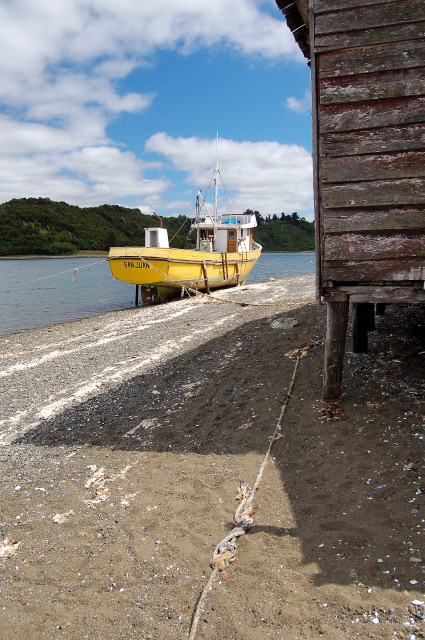



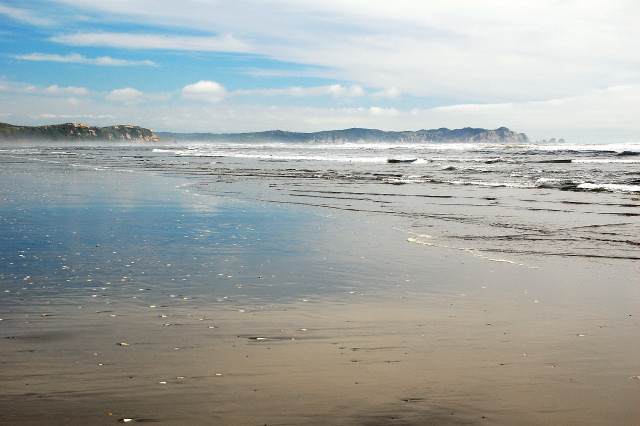
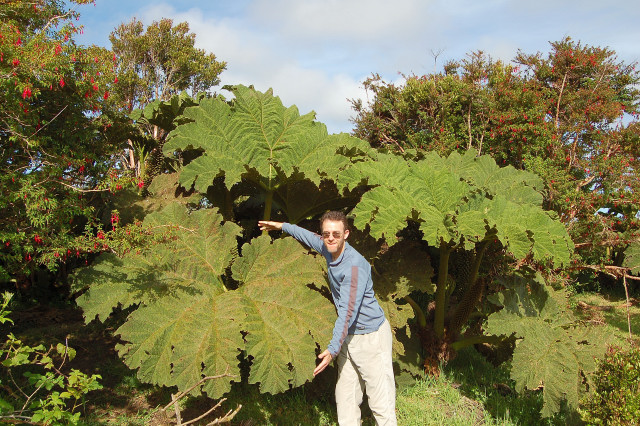
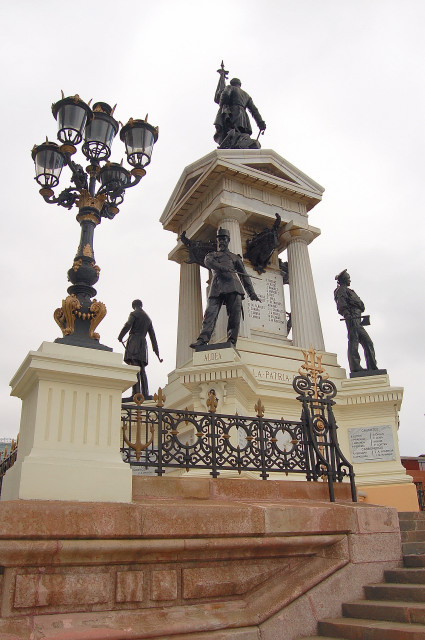
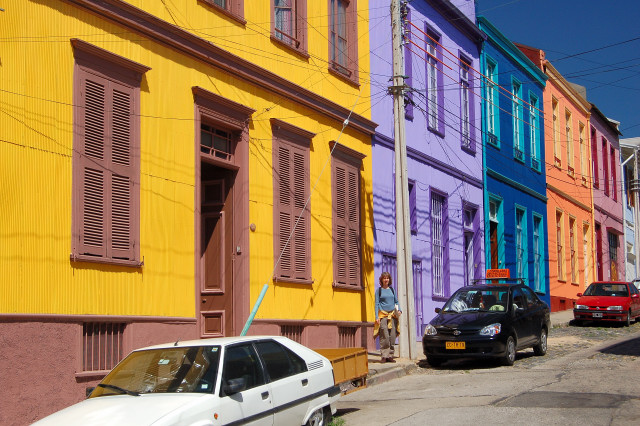
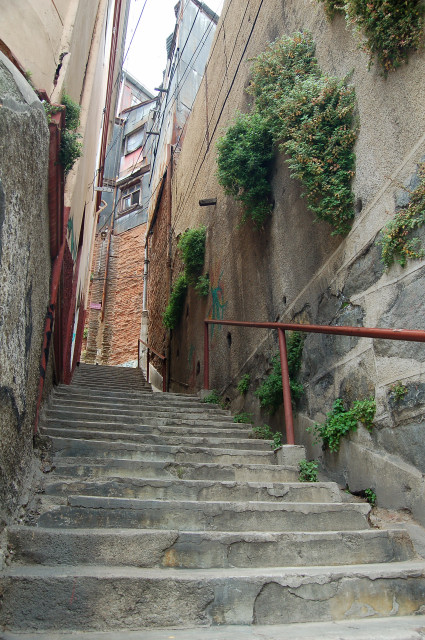
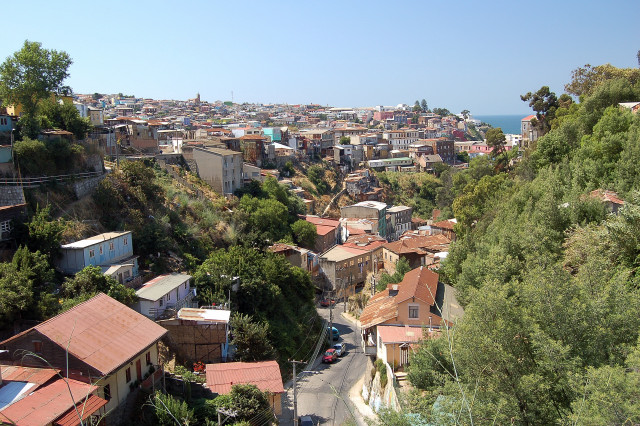
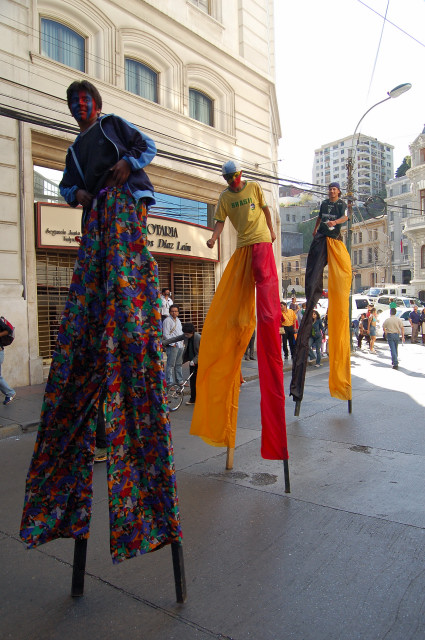
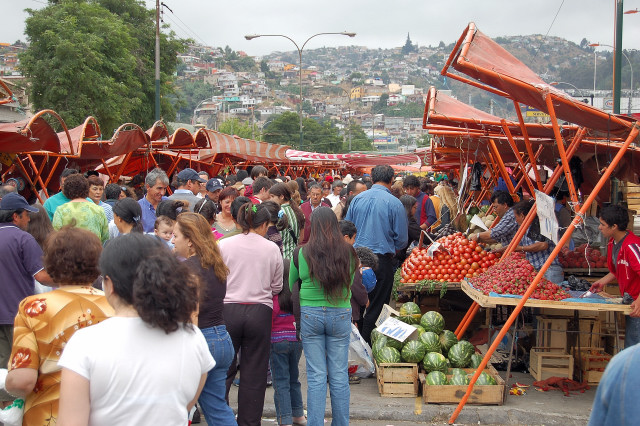
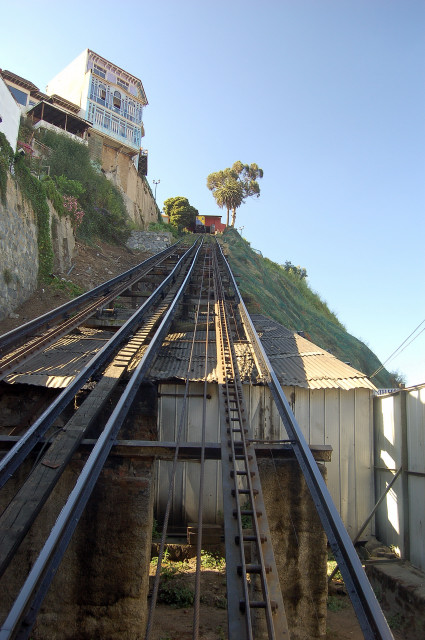
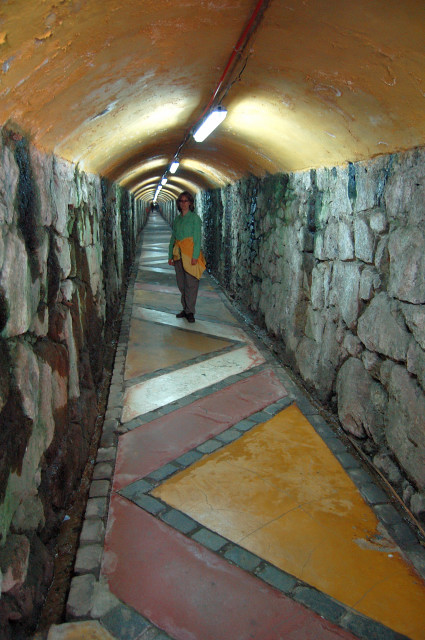
Leave A Comment